Basket and lid Item Number: E423982-0 from the National Museum of Natural History

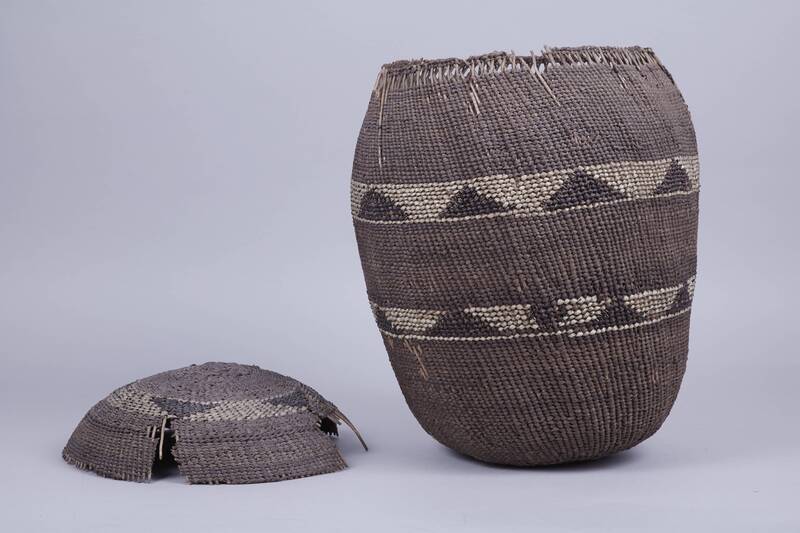
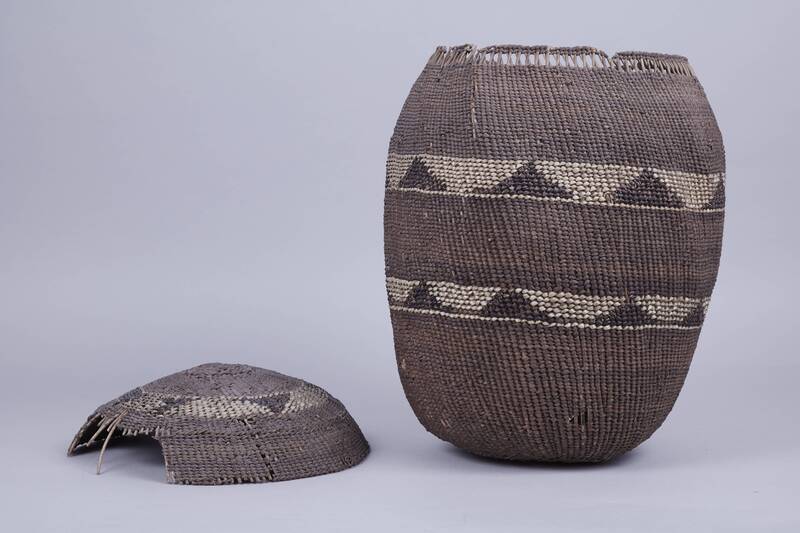
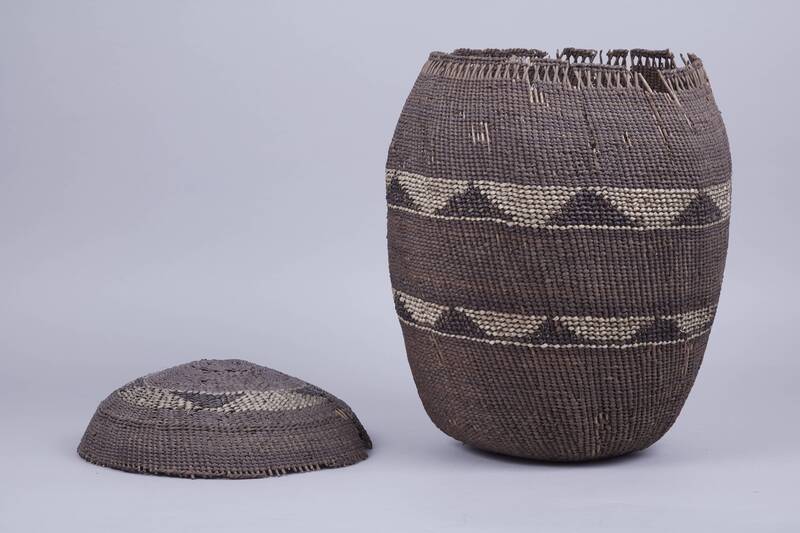
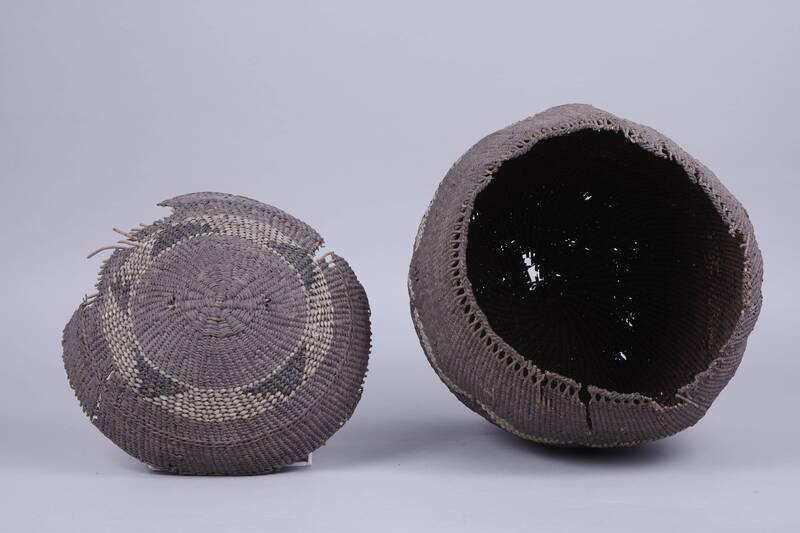
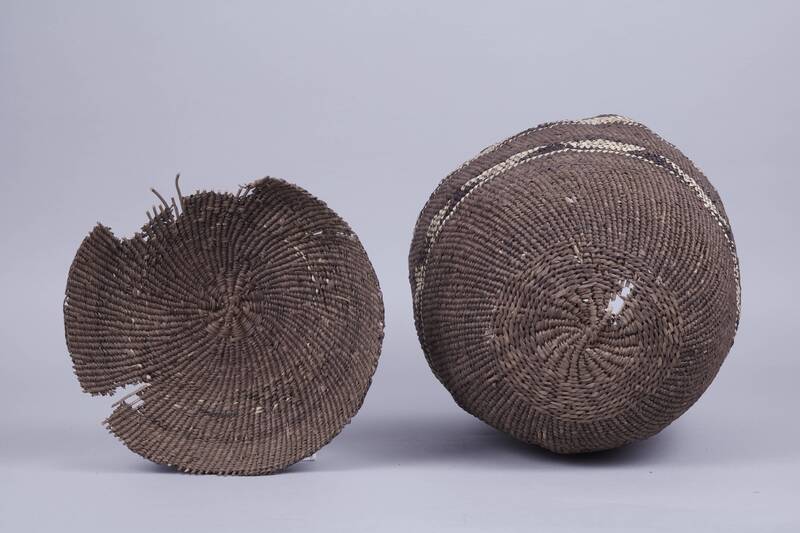
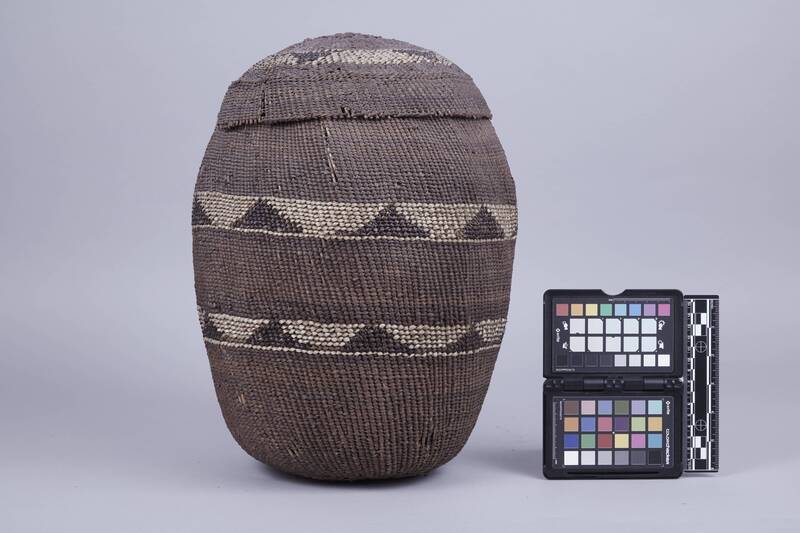
Notes
Originally thought to have been made by people from the Klamath River region (Hupa, Yurok, or Karok) of northern California, later identified (by Margaret S Mathewson from Oregon State) as from the Siletz Reservation in coastal Oregon and from the turn of the century or late 1880s.Large, barrel-shaped basket with lid, probably a storage basket. Diagonal or 3-strand twined base with single-twined body. Two horizontal bands of white grass overlay with black triangles of maidenhair fern stem. Row of openwork just below rim, where pairs of warp elements have been crossed to form decorative x's. Two rows of single twining at the rim. The lid is bowl shaped, with one horizontal band of overlay matching that of the basket.The Confederated Tribes of Siletz include Clatsop, Chinook, Klickitat, Molala, Kalapuya, Tillamook, Alsea, Siuslaw/Lower Umpqua, Coos, Coquelle, Upper Umpqua, Tututni, Chetco, Tolowa, Takelma, Galice/Applegate, and Shasta.
Item History
- Made in Oregon, USA ? or California, USA ?
- Collected in Oregon, USA ? or California, USA ?
- Received from National Museum of Natural History on November 5, 2019
Who
- Culture
- Siletz ?
- Received from
- National Museum of Natural History
Where
- Holding Institution
- National Museum of Natural History
- Made in
- Oregon, USA ? or California, USA ?
- Collected in
- Oregon, USA ? or California, USA ?
When
- Acquisition Date
- on November 5, 2019
Other
- Accession Number
- 2084023